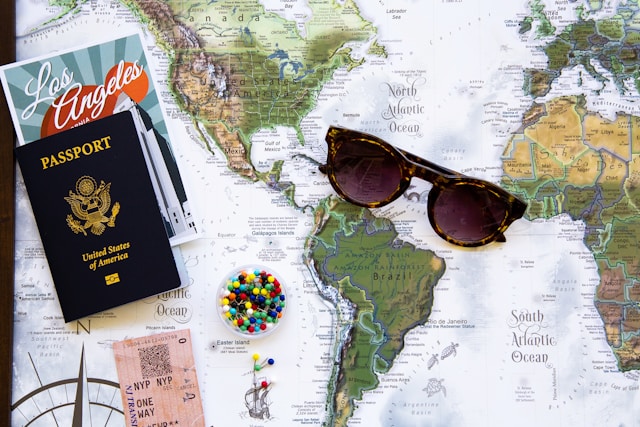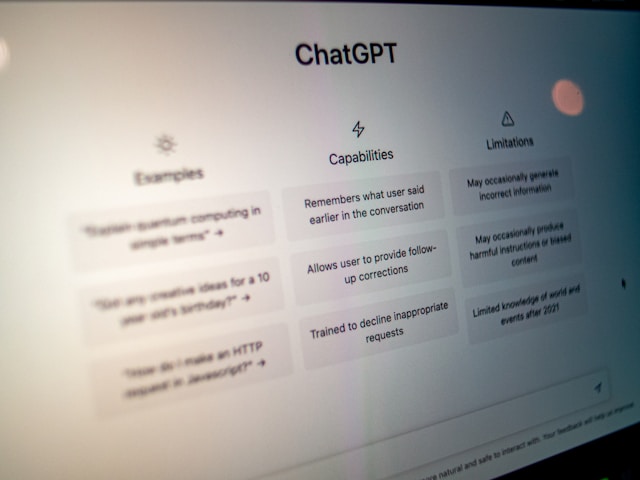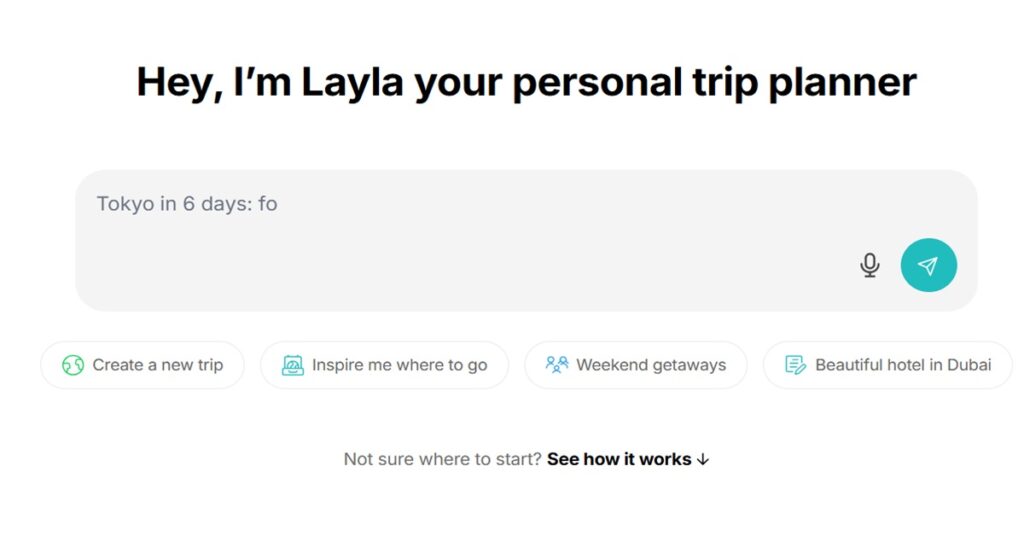Traveling alone can be one of the most freeing experiences in the world. But it also comes with its own set of challenges—planning, budgeting, safety, and choosing what to do without anyone else’s input. That’s where technology steps in. Today, the best AI trip planners for solo travelers are changing the way we plan our adventures. These smart tools not only build custom itineraries but also help solo travelers feel more confident, organized, and safe wherever they go.
With AI now embedded in everything from maps to booking apps, solo travel planning has become faster, smarter, and even more budget-friendly. Whether you’re looking for a free AI trip planner, a mobile AI trip planner app, or something that helps you explore the world while sticking to a budget, this guide will help you discover the perfect tool for your next solo journey.
Why Use an AI Trip Planner as a Solo Traveler?

Traveling solo means you get to follow your own schedule, eat what you want, and explore your way. But it also means every detail—flights, hotels, activities—rests on your shoulders. This is where AI-powered itinerary builders in 2025 come to the rescue. These tools combine data, machine learning, and real-time travel feeds to make planning a solo trip simple, stress-free, and even fun.
1. Smart Customization
AI trip planners analyze your preferences, travel dates, budget, and interests. They give you day-by-day suggestions tailored just for you. This takes out the guesswork and makes solo travel feel more guided. Whether you’re an adventure seeker or a museum lover, the planner adjusts to your vibe.
2. Budget Control
Many tools now offer features for an AI trip planner with budget settings. You simply enter your travel budget, and the AI breaks it down for accommodation, transport, food, and activities. It can also suggest cheapest flight combinations using AI, ensuring you don’t overspend.
3. Time-Saving Automation
AI eliminates the need to manually search for everything. Instead of browsing through dozens of travel blogs or booking websites, AI tools summarize the best options for you in seconds. They generate full itineraries and optimize travel routes based on your time frame.
4. Safety and Solo-Friendly Tips
Some AI tools use community reviews, safety data, and traveler ratings to recommend safer neighborhoods and attractions. If you’re planning a solo trip to an unfamiliar place, the AI can help you avoid areas with low safety ratings or limited access to public transport.
5. Easy Access and On-the-Go Planning
Most modern AI planners are available as AI trip planner apps, allowing you to plan while commuting, relaxing at home, or even during a layover. Many also offer offline access, a huge bonus if you’re traveling somewhere with weak internet.
6. Real-Time Updates and Alerts
A great AI trip planner can send notifications about flight delays, bad weather, or schedule conflicts. Some even suggest last-minute itinerary changes to avoid disruptions. This level of real-time support is especially useful when traveling alone.
7. Visual Route Mapping
Visualizing your journey is easy with AI. Some planners include maps, timelines, and drag-and-drop tools to help you fine-tune your trip. You can see your path across cities and countries without opening five different apps.
8. Language and Cultural Insights
Many solo travelers worry about language barriers. Some AI tools now translate common travel phrases or provide basic cultural etiquette tips for each destination. This can boost your confidence when visiting places where you don’t speak the language.
9. Custom Activities Based on Travel Personality
Tools like Vacay AI Trip Planner and Magic AI Trip Planner go a step further by offering suggestions based on your travel personality. Whether you’re a foodie, history buff, or beach bum, these AI engines adjust your experience to fit.
10. Integration with Other Travel Services
Most AI trip planners integrate with hotel booking engines, ride-share apps, and ticket platforms. Some, like Booking.com AI Trip Planner and TripAdvisor AI Trip Planner, already come with built-in databases. You don’t need to switch platforms to book stays or tickets.
With all these features combined, it’s no surprise that many solo travelers now rely on the best AI trip planners for solo travelers to plan trips from start to finish. Whether you’re looking for a free AI trip planner or a premium AI trip planner app, the options available in 2025 are powerful and surprisingly easy to use.
How AI Is Changing Travel Planning?

The travel industry is evolving fast, and artificial intelligence is at the center of this change. Whether you’re a travel agency or an independent solo traveler, AI is now a powerful tool that transforms how we explore the world.
From Static Plans to Smart Systems
Before AI, planning a trip meant using checklists, spreadsheets, and dozens of browser tabs. In 2025, AI-powered itinerary builders are replacing these outdated tools. These systems learn your preferences and adapt in real time. They give solo travelers access to smarter, faster planning—without the overwhelm.
AI doesn’t just suggest destinations. It calculates travel time, compares options, and sequences your days logically. If your flight changes or a museum closes, your itinerary updates automatically.
How Travel Agencies Use AI to Reduce Costs?
AI isn’t just helping individuals. It’s changing the way travel agencies operate too. Many travel agencies now use AI to reduce research time, offer personalized recommendations, and even automate bookings. This reduces labor costs and improves customer service.
For example, AI helps agents find the best airline deals, use optimal hotel combinations, and cut down on manual work. This shift helps solo travelers too—since agencies can now offer affordable packages based on your habits, budget, and travel history.
Blending Data, Maps, and Language Models
AI combines real-time data (like flight status), maps, and even language models like ChatGPT to generate full trip plans. This means you no longer have to guess how long it takes to reach a spot or whether it’s open on Sundays. AI knows and adjusts.
Planning Around Preferences and Personalities
Some AI tools now use behavioral data and mood preferences. They don’t just ask “Where do you want to go?”—they ask “How do you want to feel?” That’s how tools like Vacay AI Trip Planner and Layla AI Trip Planner build emotional, flexible plans that match your solo travel goals.
Integration with Global Tools
Tools like Google AI Trip Planner and Booking.com AI Trip Planner are now using AI to link every step of your trip—flights, hotels, attractions, transport, even food. If you’ve booked a flight with Google, for example, the AI suggests the best time to leave your hotel or when to check in.
Flight Planning Made Smarter
AI now plays a big role in saving solo travelers money. Using AI to find cheapest flight combinations is no longer a niche skill. Tools now compare flights across multiple countries, consider stopover time, and recommend when to book for the lowest price.
Whether you want a best free AI trip planner or an advanced one with premium features, the 2025 landscape offers smarter tools than ever before. And this means more freedom, better planning, and safer travel for people going solo.
15 Best AI Trip Planners for Solo Travelers
The rise of AI travel assistants has made it easier than ever for solo travelers to create personalized, efficient, and budget-friendly itineraries. Below are the best AI trip planners for solo travelers in 2025, chosen for their intelligent features, ease of use, and solo-friendly design.
1. Google AI Trip Planner
The Google AI Trip Planner is basically Google Maps. It can help you plan trips and is perfect for solo travelers who already rely on Google services. It automatically pulls flight and hotel details from your Gmail, integrates your plans into Google Calendar, and even provides suggestions on where to eat or visit based on your search history and map activity. Its AI can predict travel time, suggest popular solo-friendly spots nearby, and sync everything into a single view.
This planner excels at organizing trips without requiring extra logins or manual data entry. It’s especially useful for those traveling in the USA, where Google Maps and local data are highly accurate. If you prefer a streamlined, minimalist approach, Google’s AI trip planner app is hard to beat.
2. Layla AI Trip Planner
Layla AI Trip Planner takes a more conversational approach. Instead of filling out forms or toggling filters, you simply type what you’re looking for—like “Plan a five-day trip to Lisbon with a low budget and local experiences”—and Layla does the rest. It builds your itinerary step-by-step, adapting it to your travel style.
This planner is a favorite among solo travelers who want both flexibility and personality in their plans. Layla can recommend safe accommodations, unique local spots, and budget-friendly activities. It’s like having a smart friend who knows your taste and plans everything accordingly. Plus, its web-based assistant works globally and supports last-minute changes.
3. Booking.com AI Trip Planner
The Booking.com AI Trip Planner uses your search history and previous bookings to generate personalized travel ideas. It’s especially handy if you frequently book through Booking.com, as it understands your hotel preferences, spending habits, and even favorite types of attractions.
For solo travelers, this AI is ideal because it bundles together lodging, transport, and activity recommendations without requiring you to jump between different sites. It also provides price alerts and suggests alternatives if something is sold out or overpriced. You can type a prompt like “Find me a solo trip to Rome under $800 for 4 nights”, and it will deliver a full itinerary in seconds.
4. TripAdvisor AI Trip Planner
TripAdvisor AI Trip Planner taps into its massive database of user reviews to offer smart recommendations for places to stay, eat, and explore. Unlike traditional TripAdvisor browsing, the AI version builds an itinerary for you automatically based on your interests, location, and trip duration.
This planner is especially useful for solo travelers who want to explore cities with detailed input from other solo adventurers. It prioritizes well-reviewed and safe attractions, which makes a huge difference when you’re on your own. You can ask it to “Plan a solo foodie trip to Tokyo for 3 days” and get a day-by-day breakdown with review-backed suggestions.
5. Vacay AI Trip Planner
If you want a personalized travel experience based on your personality, the Vacay AI Trip Planner is your go-to option. It begins with a quick quiz that asks about your energy level, travel style, and interests. Based on your answers, it tailors a trip that matches your vibe.
This tool is especially loved by introverted solo travelers and digital nomads who want peaceful yet enriching experiences. Vacay also balances travel time, relaxation, and cultural exposure so you don’t burn out. Its budget filtering and destination flexibility make it a strong contender as one of the best free AI trip planners today.
6. Magic AI Trip Planner
Magic AI Trip Planner lives up to its name by simplifying complex, multi-stop travel into a clean, well-structured itinerary. It uses a GPT-based engine that can understand natural language prompts like “Plan a road trip across California with stops in national parks”. The tool then optimizes your route, suggests where to stay, and offers local tips.
Solo travelers who enjoy adventure or slow travel love Magic because of how effortlessly it creates flexible plans. It also excels in suggesting lesser-known destinations and eco-friendly stays, which appeals to modern explorers looking for meaningful travel.
7. Wanderlog
Wanderlog combines the simplicity of list-based planning with AI recommendations that adapt to your travel history. It allows solo travelers to build day-by-day plans by simply inputting a city and travel dates. The AI then pulls in recommended activities, restaurants, and routes.
It also has a powerful AI trip planner app for iOS and Android, making it easy to access your itinerary on the go. Wanderlog works well offline, supports budgeting tools, and even includes weather forecasts to help you adjust activities in real-time.
8. Roam Around
Roam Around is built on top of ChatGPT and uses your text input to generate personalized travel plans. Unlike traditional planners, Roam Around’s interface is entirely conversational. Just type “I want a weekend solo trip to Barcelona with art, food, and no big crowds”, and it creates a rich itinerary using AI’s knowledge of the city.
Roam Around also adapts your plans if something changes and highlights safe, solo-friendly routes and spots. It’s one of the most dynamic tools for travelers who want spontaneity mixed with structure.
9. Curiosio
Curiosio is best known for planning road trips and scenic routes. It focuses on creating maps that take you off the beaten path. Solo travelers who love driving or renting a car will appreciate how it picks roads less traveled and interesting stopovers.
This tool works especially well in the USA, Canada, and Europe, making it one of the top picks for solo explorers looking to see more than just tourist highlights. If you’re planning a national park tour or cross-state journey, Curiosio is worth trying.
10. TripPlanner.ai
TripPlanner.ai is ideal for travelers who want strict control over time and money. It lets you set a total budget, and the AI breaks down costs by transport, food, and lodging. You can even select how long you want to spend walking, sightseeing, or relaxing.
Solo travelers who are time-sensitive or cost-conscious will love its day-planning feature. With just a prompt like “Plan a 3-day trip to Prague under $500”, you get a fully structured itinerary complete with cost estimates.
11. iPlan.AI
iPlan.AI is a mobile-first itinerary builder that allows travelers to plan each day of their trip in detail. It asks questions about your pace, interests, and preferences—then creates a plan that balances activities, meals, and downtime. Solo travelers benefit from its time-slot optimization, ensuring you don’t waste hours figuring out what to do next.
The app also lets you choose between walking, public transport, or taxi-based plans. For budget travelers, this can mean saving both time and money. Its clean interface makes it one of the most user-friendly AI trip planner apps available today.
12. Tripper AI
Tripper AI specializes in multi-destination travel. If you’re a solo backpacker planning to visit several countries or cities in one go, this AI planner helps you connect the dots. It suggests optimal transport between places such as airports and your hotels, ideal layover durations, and budget-friendly accommodation options along the route.
It’s especially handy for long-term travelers or solo nomads who want help structuring complex journeys without overthinking. With simple inputs like “Plan a 10-day trip across Southeast Asia”, Tripper AI builds a smart, sequenced itinerary.
13. Wonderplan
Wonderplan is a newer AI-powered travel planner that creates personalized itineraries based on your travel preferences, budget, and trip length. You simply enter your destination and interests—like museums, cafes, nature, or nightlife—and Wonderplan builds a structured itinerary with time blocks and recommended stops.
It supports multiple cities and provides travel duration between places, making it especially useful for solo travelers who want to stay organized but flexible. It also includes maps and quick edit tools so you can shift things around easily. While still growing, Wonderplan is gaining attention for its intuitive design and helpful day-planning features. It’s a solid addition for solo travelers looking to try a modern, easy-to-use trip planner.
14. BetterTravel.AI
BetterTravel.AI is a newer tool gaining traction among digital nomads and solo professionals. It creates trip plans based on your preferences, visa requirements, and even COVID or weather alerts. This makes it ideal for international solo travelers heading into unfamiliar territories.
One of its strengths is its focus on safety and logistics. It warns you about risky zones, visa processing times, and high-cost areas. If you’re traveling alone to multiple countries, this AI trip planner adds an extra layer of peace of mind.
15. Nomad AI
Nomad AI is designed specifically for remote workers and solo backpackers. It helps you plan extended stays with a focus on work-life balance. You can set filters for good Wi-Fi, quiet cafes, low cost of living, and co-working spaces. Then, Nomad AI recommends cities, neighborhoods, and even rental options based on your digital lifestyle.
It’s one of the best free AI trip planners if you’re planning to travel and work abroad. Solo travelers love it for the ability to plan months in advance without having to manually research each place.
Using ChatGPT as an AI Travel Planner

While there are dozens of dedicated AI trip planner apps, many solo travelers are now using ChatGPT itself as a travel planning assistant. ChatGPT doesn’t come with maps, booking features, or flight data, but its strength lies in flexibility and conversation.
You can prompt it with full-text instructions like:
“Plan a 3-day solo trip to Florence focused on art and wine.”
“Suggest a one-week itinerary for South Korea under $1,200 with food and nature experiences.”
ChatGPT can return a fully customized, day-by-day itinerary based on your request. It also gives packing lists, public transportation tips, and even basic cultural etiquette. This makes it an excellent companion for solo travelers who want planning support but aren’t tied to a single app or platform.
Advanced users even combine ChatGPT with other tools—for example, creating an itinerary here, then checking flight prices with a dedicated AI trip planner app.
While it doesn’t replace full-service apps like Layla or Vacay AI Trip Planner, ChatGPT is a surprisingly powerful resource for free-form, creative planning. If you’re comfortable with typing your travel needs in natural language, it’s one of the most flexible and adaptive tools available.
Using AI to Find Cheapest Flight Combinations

You must also be wondering how to use AI to find cheapest flights for free. For solo travelers on a budget, saving money on flights can significantly increase what you can do once you arrive. AI is transforming this part of the travel experience. Instead of manually comparing prices across multiple websites, AI can now scan, analyze, and recommend the best flight combinations in seconds.
Here’s how it works—and how to get the most from it.
How AI Flight Search Engines Work?
AI flight planners use complex algorithms and access to real-time data to search thousands of combinations at once. They evaluate airlines, airports, layovers, and booking patterns to identify the best possible match for your needs. More advanced tools also consider time-of-day pricing shifts, airline flash sales, and alternate departure cities.
Unlike traditional search engines, AI can predict future price drops or increases based on past behavior. This means you don’t just get the cheapest option now—you may also get advice on whether to wait or book immediately.
AI in Action: Smart Search Examples
Some AI tools allow you to type full natural language prompts to find optimized results. For example:
“Find me the cheapest roundtrip flight from New York to Amsterdam in May with one stop.”
“Show me budget-friendly flights from Los Angeles to Tokyo under $900.”
“Compare flights from Chicago to London and suggest which day is cheapest to depart.”
This natural language input makes it easy for solo travelers to get smart recommendations without filtering endlessly.
Hidden Savings Through AI Suggestions
AI trip planners can suggest lesser-known hacks to lower flight costs. These include:
Alternate airports: AI may recommend flying into a nearby city instead of a major hub.
Multi-airline itineraries: Mixing different carriers can reduce overall price, especially for international trips.
Optimal layovers: AI can identify stopovers that don’t just save money—but also give you time to explore another city.
Flight+hotel bundles: Some AI engines suggest package deals when it makes sense, combining both savings and simplicity.
These strategies are particularly helpful for solo travelers who are flexible and looking for value over convenience.
AI Tools That Specialize in Flights
While most AI trip planner apps include flight search features, some are built specifically for airfare savings. These tools use advanced AI models to refine search results:
- Hopper: uses predictive pricing to tell you whether to buy now or wait.
- Skyscanner: AI tools suggest flexible dates and alternate routes.
- Kayak: Explore uses AI to suggest spontaneous destinations based on your budget.
- WayAway: offers cashback and AI-powered suggestions for solo travelers.
Some full-trip planners, like TripPlanner.ai, Magic AI Trip Planner, and Nomad AI, also include deep flight integrations. They combine airfare searches with lodging and transportation to give you a full picture of your expenses.
How Solo Travelers Benefit the Most

Solo travelers often have one big advantage over families and groups: complete flexibility. That flexibility is exactly what AI thrives on. By understanding your openness to changes in dates, airports, and even destinations, AI can save you hundreds of dollars without compromising the quality of your trip.
Here’s how solo travelers can get the most out of AI-powered flight tools:
1. Flexible Dates Mean Bigger Savings
AI tools can analyze airfare trends across an entire month. Solo travelers don’t need to work around other people’s schedules, so if AI tells you that flying on a Wednesday is $150 cheaper than Friday, you can make that change with no hassle.
Many tools highlight the cheapest travel windows by displaying color-coded calendars. They even send alerts when prices drop, making it easy to grab a deal before it disappears.
2. Willingness to Try Alternate Airports
If you’re traveling alone, switching to a nearby airport might be inconvenient—but not impossible. AI tools can find options like flying out of Newark instead of JFK, or into Oakland instead of San Francisco. These small adjustments often reduce ticket costs substantially.
Some AI planners go further by calculating the total cost, including transit to and from the airport, so you can make an informed decision.
3. More Layover Options, More Possibilities
Group travelers usually try to avoid long layovers. But as a solo traveler, you might turn a 10-hour layover into a mini-adventure. AI tools recognize this and can suggest multi-city itineraries or extended layovers that lower flight costs.
For example, AI might recommend:
“Fly from Boston to Paris via Reykjavik with a 12-hour layover for $100 less.”
“Stop in Istanbul en route to Bangkok and get a free city tour.”
Some AI planners even filter results by layover experiences, allowing you to build in an extra destination at no extra cost.
4. Travel Light, Save More
Solo travelers often travel with just a backpack or carry-on. AI flight tools know this and can filter out carriers that charge high baggage fees. This means you’re not paying extra for services you don’t need.
Low-cost carriers often look more expensive once you add baggage and seat selection—but AI reveals the true final price and helps you avoid hidden costs.
5. Last-Minute Deals and Spontaneous Trips
Spontaneity is a luxury most groups don’t have—but solo travelers can say “yes” to a trip tomorrow. AI tools monitor last-minute deals constantly and can notify you of deeply discounted flights just days before departure.
You can prompt your AI planner with:
“Show me weekend getaways under $300 leaving tomorrow.”
“Find cheap flights from Chicago to anywhere this weekend.”
For adventurous travelers, this makes solo travel both exciting and affordable.
6. AI Learns Your Travel Style Over Time
Some AI platforms, like Vacay AI Trip Planner or Nomad AI, build a profile of your past travel behavior. The more you use them, the more accurate their predictions and suggestions become. AI remembers if you prefer red-eye flights, low-cost carriers, or short layovers, and tailors future searches to match.
This evolving personalization means your solo travel becomes smoother and more efficient every time you plan a trip.
7. No Group Coordination Required
Let’s not forget the biggest win—no coordination headaches. AI can focus 100% on optimizing for you. No compromises, no delays while friends decide on travel dates or seat preferences. The AI can search solely based on what’s best for your schedule, comfort, and budget.
This makes the entire process faster and less stressful. It’s like having a personal travel agent who only works for you—and never needs a coffee break.
Which AI Trip Planner Is Best for You?
With so many great tools available, choosing the best AI trip planner can feel overwhelming. But the right choice depends on your travel goals, budget, and preferred planning style. Below is a breakdown to help you decide which planner fits your solo travel needs best.
Best Free AI Trip Planner
If you want to explore without spending extra on tools, Vacay AI Trip Planner, Roam Around, and Nomad AI are great options. They offer strong features without requiring payment or subscriptions. Vacay stands out for its personality-based trip curation, while Roam Around is perfect if you like conversational trip planning using AI. There a lot of free AI trip planners but these are the best.
Wanderlog and iPlan.AI also have solid free plans with detailed itineraries, budgeting, and map features—all optimized for solo travelers.
Best AI Trip Planner App
If you plan your trips on your phone, go for iPlan.AI, Layla AI Trip Planner, or TripPlanner.ai. These apps are light, user-friendly, and support real-time updates. They work well for solo explorers who plan on the move, during commutes or while already abroad.
For Apple users, Wanderlog is a highly rated app with seamless syncing. For Android, Layla and TripPlanner.ai offer smooth and engaging planning experiences.
Best AI Trip Planner with Budget Tools
Budget is one of the most important concerns for solo travelers. If that’s your top priority, then TripPlanner.ai, Magic AI Trip Planner, and Tripper AI are built to serve you. They allow you to input your total travel budget and see estimated costs per day, per activity, or per city.
These planners are excellent for comparing different itineraries and picking the most cost-effective route without cutting corners on experiences.
Best for AI-Powered Itinerary Builders 2025
If you’re looking for cutting-edge features like GPT-based conversation, AI-driven weather prediction, or multi-city dynamic planning, try Layla, Roam Around, and Magic AI Trip Planner. These tools are part of the new wave of AI-powered itinerary builders for 2025, and they feel less like tools—and more like digital assistants.
They understand commands like:
“Plan me a relaxing solo weekend in Istanbul with hammam spas and food markets.”
“Build a 7-day coastal road trip in Portugal with Airbnb stays and local seafood spots.”
These planners use AI to do more than just organize—they curate.
Best AI Trip Planner in USA
If you’re traveling solo within the USA, Google AI Trip Planner, TripAdvisor AI Trip Planner, and Curiosio are your best bets. They use highly localized data, including safety ratings, traffic patterns, and region-specific events. You’ll get better suggestions because these tools are built on American travel databases and user behavior.
Curiosio, in particular, is great for road trips—popular among solo travelers looking to explore the countryside or national parks.
Best for Multi-Destination or Digital Nomad Travel
Planning to travel across several countries or stay abroad for a few months? Nomad AI, Tripper AI, and BetterTravel.AI are designed with long-term solo travelers in mind. They handle visa requirements, Wi-Fi availability, cost of living comparisons, and even coworking spots.
For those combining work and travel, these tools become invaluable companions.
Best Overall for Solo Travel Simplicity
If you want an all-in-one planner that balances simplicity, flexibility, and smart suggestions, Layla AI Trip Planner or Booking.com AI Trip Planner are excellent. Layla is great for those who enjoy casual, chat-style planning. Booking.com’s tool excels in real-time travel inventory and reliability.
Ultimately, the best AI trip planners for solo travelers are the ones that match your pace, personality, and plans. And thanks to AI’s flexibility, there’s truly something for every traveler.
Final Tips for Using an AI Trip Planner

AI tools can simplify solo travel, but like any technology, they’re most useful when you understand how to make them work for you. These tips will help you get the best results from any AI trip planner app—whether you’re using it for the first time or looking to upgrade your travel routine.
1. Be Specific with Your Inputs
The more details you give the AI, the better your results. Instead of typing “Plan a trip to Spain,” try:
“Plan a 7-day solo trip to southern Spain in September with a $1,000 budget focused on food and culture.”
This helps the AI recommend realistic routes, attractions, and accommodations. Many travelers get generic results because they ask generic questions. Treat AI like a smart assistant—it needs context to shine.
2. Use Natural Language to Unlock Better Suggestions
AI trip planners today can interpret full sentences, so there’s no need to talk like a search engine. Write prompts like you’re chatting with a friend. For example:
“I want to explore the Scottish Highlands for 4 days and avoid tourist traps.”
“What are the best budget solo trips from Chicago this fall?”
This conversational input often unlocks better, more relevant results that feel tailored instead of templated.
3. Compare Multiple Planners Before Committing
No single AI tool does everything perfectly. One might be great at flights, another at daily itineraries, and another at finding hidden gems. For example:
Use TripPlanner.ai for budget planning
Try Layla AI Trip Planner for discovery through chat
Add Google AI Trip Planner for real-time logistics
Spend a little time comparing the results. It often pays off in more accurate suggestions and better deals.
4. Make Use of Calendar and App Integrations
If your AI planner offers calendar syncing, use it. This keeps your plans visible alongside your other commitments. Tools like iPlan.AI and Wanderlog allow one-click syncing with Google Calendar, which is especially helpful for solo travelers managing flights, check-ins, and activity timings.
You can also export your itinerary as a PDF or keep it accessible offline in case you’re in areas with limited signal.
5. Build Buffer Time into Your Itinerary
AI tends to over-plan. It might give you six activities in one day, which can be overwhelming—especially if you’re new to the city. Solo travelers need downtime for navigation, safety, and just enjoying the moment.
Review the AI’s plan and insert blocks for “free time” or “rest.” This makes the trip feel less like a checklist and more like an experience.
6. Double-Check All Prices and Booking Details
Some AI tools use cached prices or suggest third-party booking sites that may be outdated. Always confirm the actual cost of flights, hotels, and activities before booking—especially if you’re using an AI trip planner with budget controls.
Look closely at cancellation policies, check-in requirements, and hidden fees. Solo travelers don’t have backup if something goes wrong, so it pays to be careful.
7. Ask the AI About Local Transportation
One often overlooked feature is the ability to get transport advice. Don’t just ask for things to do—ask the AI questions like:
“What’s the best way to get around Rome as a solo traveler?”
“Is public transport safe in Buenos Aires?”
Many AI planners will provide details on local buses, metro passes, ride-share apps, or even safety tips for walking alone.
8. Use Budget Filters Strategically
If you’re on a tight budget, most AI tools allow you to set a maximum spending limit. Don’t just use the overall budget field—ask for detailed breakdowns like:
“Show me a $50/day itinerary for Hanoi, with food and transport.”
“Limit hotel spending to $100/night but splurge on one gourmet dinner.”
This lets the planner adjust your experience based on your priorities instead of forcing a one-size-fits-all trip.
9. Leverage Local Reviews and Traveler Feedback
Some AI trip planners, like TripAdvisor AI Trip Planner or Booking.com AI Trip Planner, incorporate reviews from real travelers. Use these to cross-check AI recommendations—especially for solo travel safety, cleanliness, or hidden fees.
If the AI suggests a hostel with a low safety score or a restaurant known for tourist traps, reviews will help you avoid those mistakes.
10. Save Your Inputs and Itineraries
Before closing the app or session, make sure to save your plan—especially with tools that don’t keep history. Email it to yourself, sync with your calendar, or download a copy to your phone. Losing your itinerary mid-trip can be a hassle, especially if you’re in a foreign country with limited internet.
Solo travel is all about independence—but having a well-prepared backup plan gives you peace of mind.
Conclusion
AI has transformed solo travel from a stressful task into a streamlined experience. With the best AI trip planners for solo travelers, you can build smart, personalized, and budget-friendly itineraries in minutes.
From finding the cheapest flight combinations to customizing your daily activities, AI gives you the freedom to travel your way—with confidence and control.
Your next solo trip doesn’t need a travel agent. It just needs the right AI in your corner.

